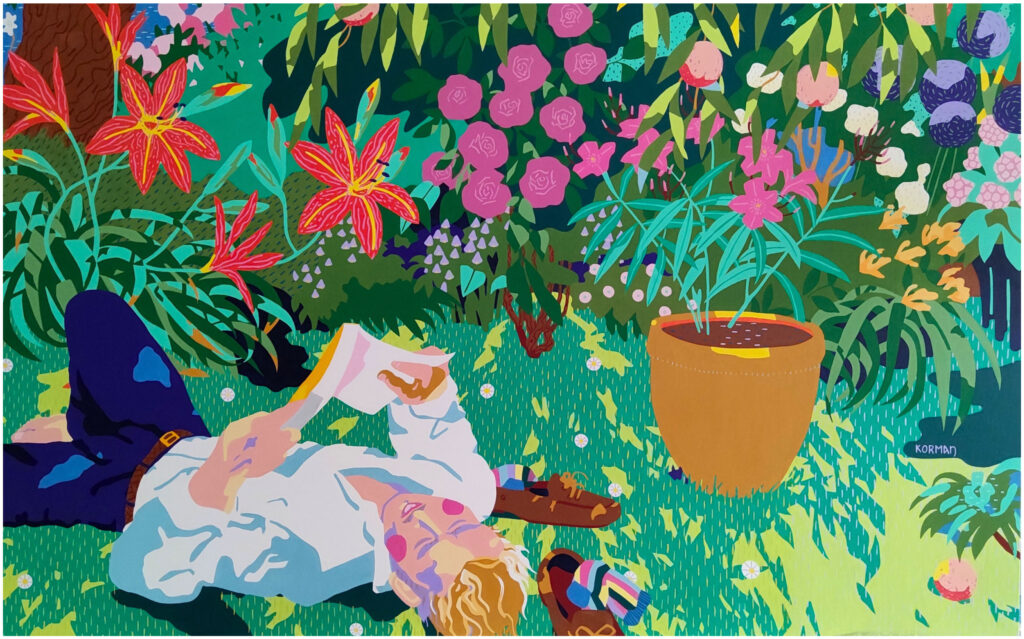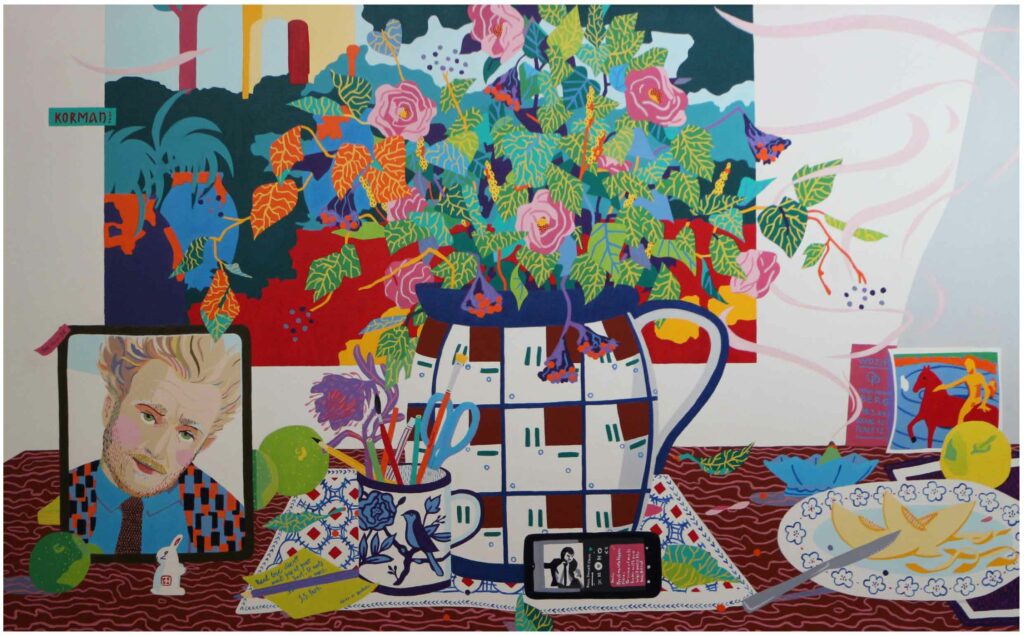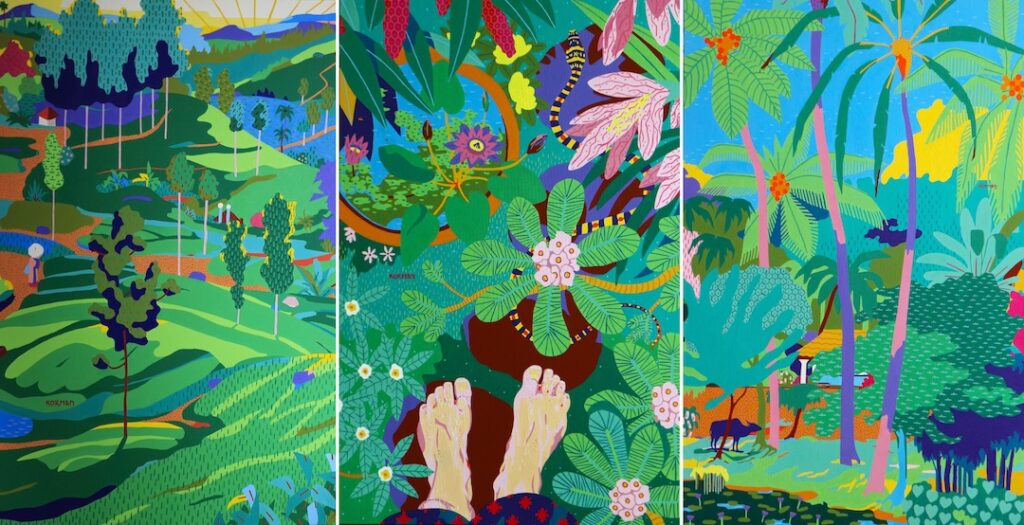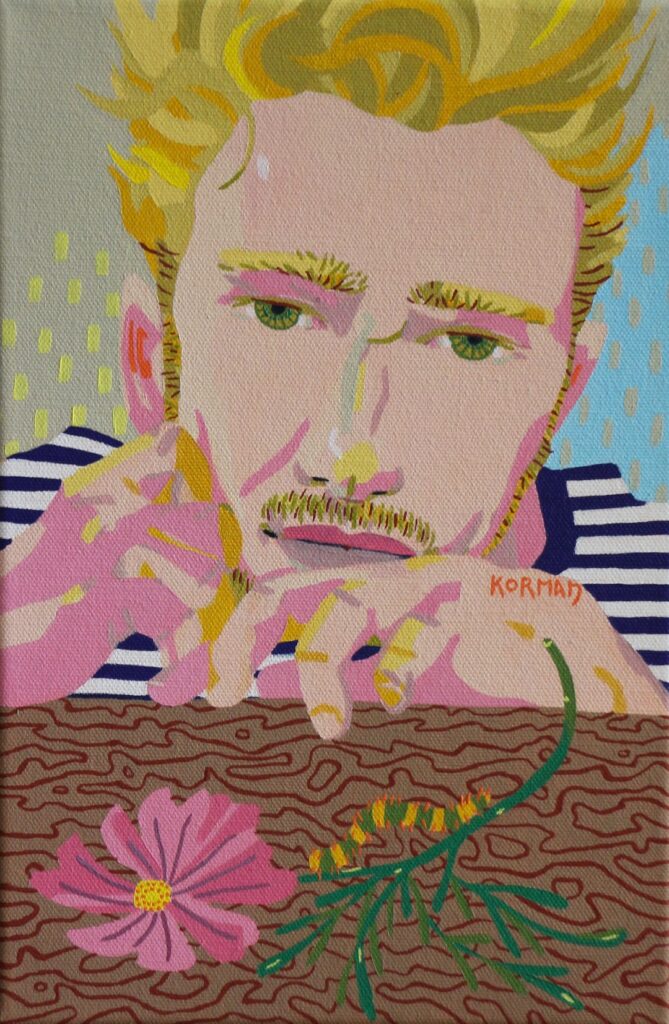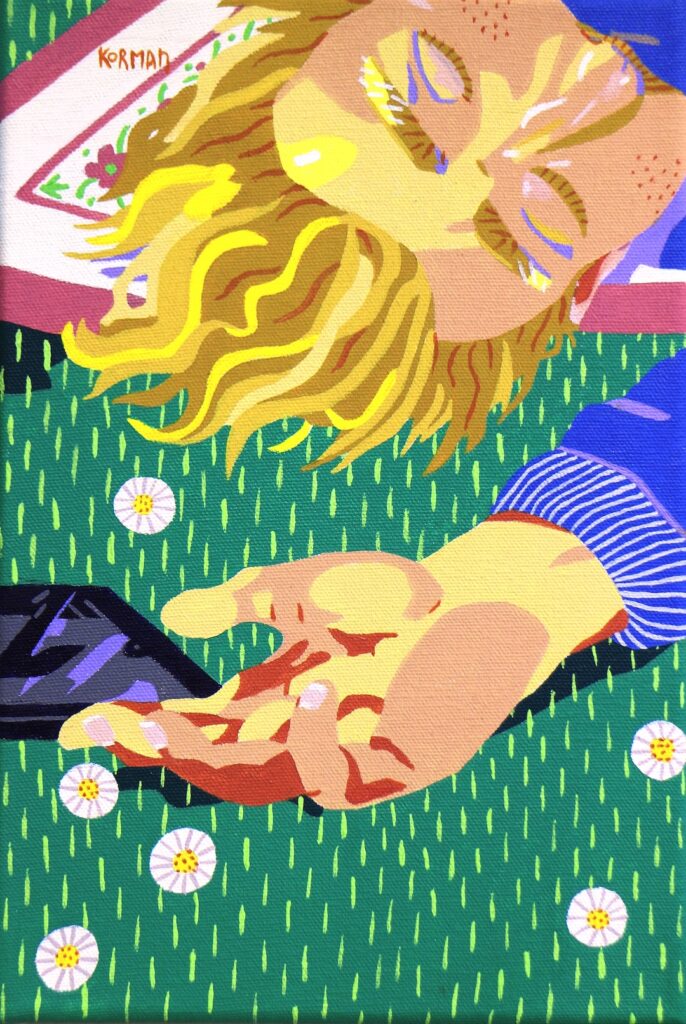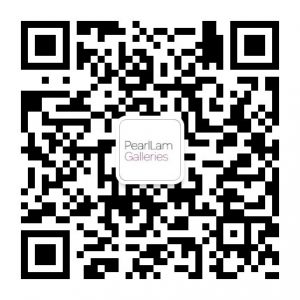29 March–10 May, 2025
MICHAL KORMAN: Les Fleurs du Jour
Shanghai
Overview
Shanghai—Pearl Lam is delighted to announce the upcoming exhibition Les Fleurs du Jour, the first solo show in China by Paris-based Slovakian painter Michal Korman (b. 1987), curated by Maria Rus Bojan. This exhibition heralds a new chapter for Korman and includes an impressive selection of recent paintings of different scales, alluding to a variety of genres, from flowers and still lives to interior scenes, landscapes, gardens, portraits, and self-portraits. Central to the ethos of this exhibition is the artist’s determination to celebrate the beauty of life in each work by perpetually searching for an ideal expression that is able to recreate a holistic connection with everything that holds importance in his life.
Answering the difficult question of how to survive and create art in our current aggressive-regressive times, Korman’s proposal is disarmingly simple: to create visual narratives that prompt a deeper connection with nature, nurturing meaningful relationships, and savouring life’s simple pleasures. From this perspective, his paintings are first and foremost intimate visual conclusions of his daily triumph to defy the rapid changes that are constantly altering our world.
In his attempt to give shape to these personal aspirations, Korman inevitably draws from art historical examples such as Italian Proto-Renaissance painting and Japanese Ukiyo-e prints, Persian miniatures, the intimate interiors of the Nabis, and the still lifes of Henry Matisse. His artistic vocabulary also includes certain references to the Belle Époque aesthetics, as well as to the architectural ornaments, embroidery, and ceramics from his parents’ home in Partizanske, the town where he was born in Slovakia and where he became fascinated by interiors, flowers, and gardens.
Korman’s ability to paint flowers and create unique interior environments comes, in part, from his desire to convey the power of several seminal childhood experiences. As a child, he suffered from hay fever and was not allowed to approach flowers, especially during their blooming season. As an adult, flowers not only became his favourite painting subjects but also a compulsory part of his daily décor, inevitably complementing the ambience and the spirit of each day.
Alluding to Baudelaire’s volume Les Fleurs du Mal, where the poet explores how beauty can arise from suffering and despair, Les Fleurs du Jour encapsulates Korman’s aspiration to capture the beauty of the quotidian by eloquently appealing to flowers, their language, and symbolism in their full expressive complexity.
Beyond the deliberate reference to the famous Dante Alighieri’s verse, “Du Paradis, nous sont restées trois choses: les étoiles de la nuit, les fleurs du jour et les yeux des enfants [from Paradise, we have three things left: the stars of the night, the flowers of the day and the eyes of children]”, this title conceptualises the artist’s drive to articulate his own view of a possible earthly paradise in a constantly evolving form around the flower of the day.
“A flower is not only an element of décor—it is a fundamental expression of beauty and nature’s intelligence,” the artist explains. A central part of the exhibition is therefore dedicated to still lifes and flowers captured in their different blooming moments, compositions that allude to themes of renewal and rebirth such as the Vanitas and the ever-changing seasons. Though attributes vary in each work, such as the flower species, type of vase, colours, and patterns of the tablecloth, there are some consistent elements, which indicate the artist’s deliberate choice of undermining certain clichés referring to this genre. The introduction of elements such as mobile phones, the artist’s favourite books, and small sketches depicting pictures of his loved ones complement the scene, actualising the composition, and making it more contemporary. The boldly coloured, almost graphic composition of the still lifes offer the viewer a new way of experiencing colour, form, and space, fostering a level of immediacy that conveys a sense of familiarity, warmth, and comfort.
An abundant and focused range of blue and green contrasting the red and orange exude from the second largest series of works present in the exhibition. Luxuriant, overwhelming, and surprising, these paintings provide a wholly contemporary take on garden and landscape painting. Aspiring to capture the equilibrium between the natural and artificial, the artist includes various characters in almost every painting, either for the purpose of creating the illusion that the viewer is walking through the picture or for highlighting the need of reconnecting with beauty and nature whilst living in the city.
The flat painted surfaces and the lack of perspectival depth prompt viewers to look at the graphically delineated patterns and decorative rhythms of the picture rather than the illusory three-dimensional space implied by the subject. Even in the small format paintings, the artist addresses the same attention to his subjects, considering that every place we encounter on a daily basis, whether it is a beautiful, cultivated garden or the park we pass through every day, can turn into a space of healing and meditation. Through the very act of painting, these idyllic scenes are imbued with an elevated meaning, becoming sort of timeless microcosms, a piece of paradise or an inner garden, which the artist bears inside him.
Finally, the third category of works, the portraits and self-portraits, provides insights into Korman’s intense observations of his own state of mind and the people close to him. Suffused with the melancholic light of memory, these depictions reveal emotional depth and psychological insight, focusing on a sense of intimacy that allows viewers to connect with the portrayed figures on a personal level.
In terms of aesthetic vocabulary, Korman uses predominantly bright, vivid colours and dense visual patterning in most of his paintings to add depth or enhance the composition’s harmony. By reducing the medium’s capacity of expression to flat coloured surfaces displayed in reverse order— applying the front-most layer of paint to the back side and building up subsequent layers with the background coming to the same level—the artist appropriates the subject by fully reconstructing it.
Encompassing all the characteristic elements of his vocabulary, the new body of works from this exhibition reveals an increased formal and compositional sophistication and a mature artistic vision.



